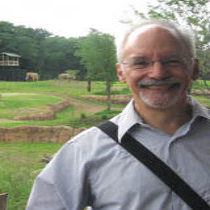Landscape Architecture for Landscape Architects › Forums › PLACES & SPACES › Animurbanism
- This topic has 1 reply, 5 voices, and was last updated 15 years, 3 months ago by
 Thomas J. Johnson.
Thomas J. Johnson.
-
AuthorPosts
-
August 27, 2010 at 4:39 pm #168070
Anonymous
InactiveI came across a very interesting post on Jason King’s blog landscape + urbanism. It is a fun article and he raises some great questions to share:
I am very fond of designs which use biomimicry or animism as inspiration. These non-abstracted animal forms are very intriguing, although it is disappointing to see that they did use more traditional layouts in the urban fabric (missed opportunity).Would it only be fun when your in a plane? How is the experience of these developments unique? Are they more/less sustainable? What’s your take?August 27, 2010 at 5:25 pm #168074 Thomas J. JohnsonParticipant
Thomas J. JohnsonParticipantAnimurbanism is hard to say without laughing… but the idea has been around for a long time…
Our Nations Capitol:
N. American Indian Serpent Mound:
<img src="http://t0.gstatic.com/images?q=tbn:wQ1wGBCOWWD5-M:http://www.hp.uab.edu/image_archive/up/mound01.jpg&t=1“/>
Peruvian Nazca Indians
Why do people do this? To establish ownership of an area, for a sense of identity, to communicate with the gods…
Applied to urban design, it becomes a function follows form phenomenon, creating awkward street angles, difficult parcels for building and traffic congestion. That was not of concern to the designers though. It is the message that is important.As for designing a neighborhood in the shape of an elephant, sure, why not? As long as it functions. What an elephant has to do with a neighborhood, I have no idea. Personally, I think they would be better served designing a cardiovascular system or a tree branch system, something that has to do with efficient movement of energy.
August 27, 2010 at 6:36 pm #168073 Rob HalpernParticipant
Rob HalpernParticipantPerhaps this is simply a cavil, but these township designs are neither biomimicry nor animism. Those are two different things.
Biomimicry may offer some great inspiration and innovations for design.
Animism, well that’s a different matterAugust 29, 2010 at 4:08 pm #168072 Roland BeinertParticipant
Roland BeinertParticipantIt kind of bothered me that he used the word biomimicry to describe this, too. I hope people don’t start to think that’s what it really means.
August 29, 2010 at 6:56 pm #168071 BoilerplaterParticipant
BoilerplaterParticipantAs one of the posters on the site alluded, these kind of plans represent failed planning ideas. Just as with an orthogonal grid or streets laid out in the shape of a palm, natural patterns are ignored, treated as if they are not even there. Where are the streams, wetlands, animal migration routes, soils unsuitable for building, street layout for solar orientation? What about existing cultural features? All that has to yield to plans such as this. Yeah, maybe its just empty, flat desert with no interesting or ecologically significant local features, but its still just form-making that wont be appreciable from within the developments.
-
AuthorPosts
- You must be logged in to reply to this topic.


